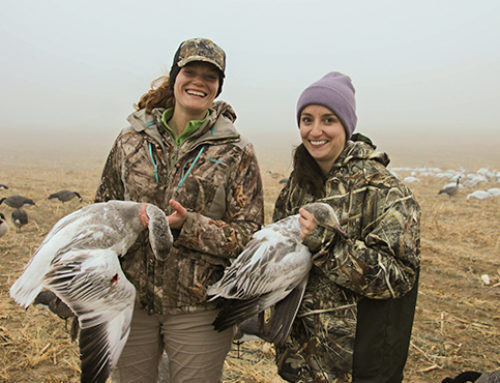Eastern Survey Area Reveals Mixed Results

The Waterfowl Population Status Report’s eastern survey area is a key fall-flight indicator for Atlantic Flyway waterfowlers. Conducted jointly by the U.S. Fish and Wildlife Service and Canadian Wildlife Service since 1990, the eastern survey provides estimates for the six most abundant breeding ducks across the eastern United States and Canada.
Key species increased over 2018, including an East Coast icon: Black ducks are up 5 percent to 729,000, but remain 16 percent below the long-term average.
 “Certainly that’s welcome news for black ducks,” said Dr. Frank Rohwer, president of Delta Waterfowl. “I expect the daily limit of two black ducks to continue in the United States for the 2020-2021 season.”
“Certainly that’s welcome news for black ducks,” said Dr. Frank Rohwer, president of Delta Waterfowl. “I expect the daily limit of two black ducks to continue in the United States for the 2020-2021 season.”
Ring-necked ducks climbed 10 percent to 694,000, which is equal to the long-term average, and goldeneyes rose 5 percent to 516,000, 13 percent below the long-term average. A survey of wood ducks from New Hampshire south to Virginia estimated 399,100 birds, a slight increase over 2018, and slightly above the long-term average.
Overall, eastern mallards declined 2 percent to 1.05 million, which is 16 percent below the long-term average. However, mallards breeding in the northeastern U.S. (New Hampshire to Virginia) — the downward-trending population that led to reduced Atlantic Flyway bag limits for the 2019-2020 season — are up 17 percent to 565,000 birds. Although mallards in the northeastern U.S. remain 19 percent below the long-term average, it’s the second straight year the population has increased.
“To me, the increase among northeastern U.S. mallards is the best news in the survey, though I don’t see bag limits increasing anytime soon,” Rohwer said. “The eastern mallard issue isn’t going away.”
In partnership with Dr. Mike Schummer of the State University of New York College of Environmental Science and Forestry, Delta Waterfowl is currently studying stable isotopes in the flight feathers of mallards shot in the Atlantic Flyway, in order to zero in on their most critical breeding areas.
“Biologists know so much more about prairie mallards than those that breed in the East,” Rohwer said. “Delta hopes to change that, and in turn, get eastern mallards back on track.”
Green-winged teal also declined, down 11 percent to 303,000, 19 below the long-term average. A decrease in eastern greenwings is more noteworthy given the flyway’s multi-stock harvest system, established last year.
“The Atlantic Flyway sets season lengths and bag limits based on a multi-stock system using the aggregate populations of green-winged teal, ring-necked ducks, goldeneyes and wood ducks,” Rohwer noted. “Of these, only greenwings declined a bit, so I’m confident the Atlantic Flyway will again enjoy liberal harvest regulations. But remember, mallard and black duck limits are now considered independently.”
Rounding out the survey, mergansers declined 3 percent to 643,000, 4 percent above the long-term average.
According to USFWS pilot-biologists, waterfowl production conditions in the East were good to excellent in the southern portion of the survey and poorer farther north. The breeding habitat across much of the eastern survey area was similar to or improved over 2018.
“The reports suggest duck production should be pretty good in the East,” Rohwer said. “I’m optimistic that hunters will have a decent fall flight.”





Leave A Comment